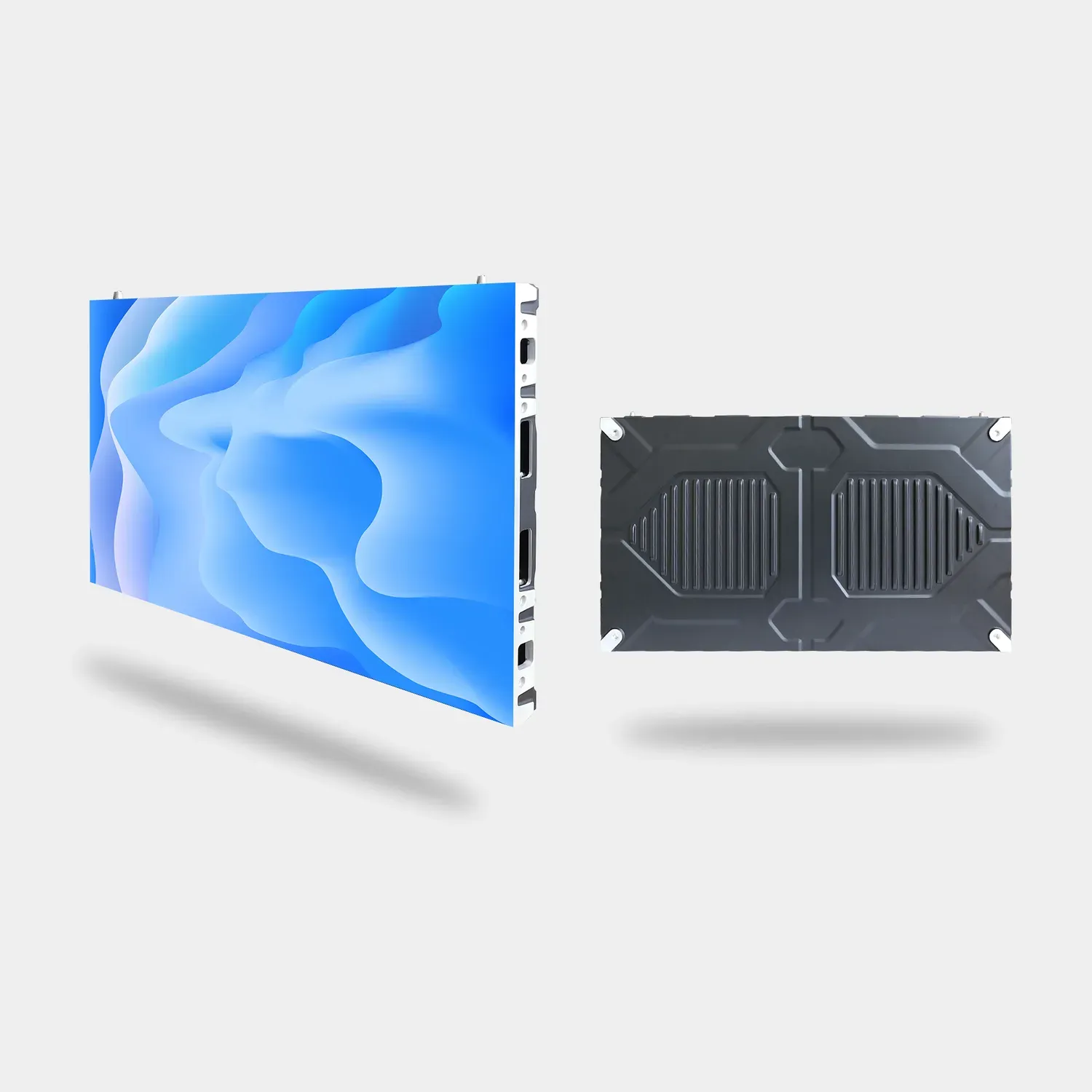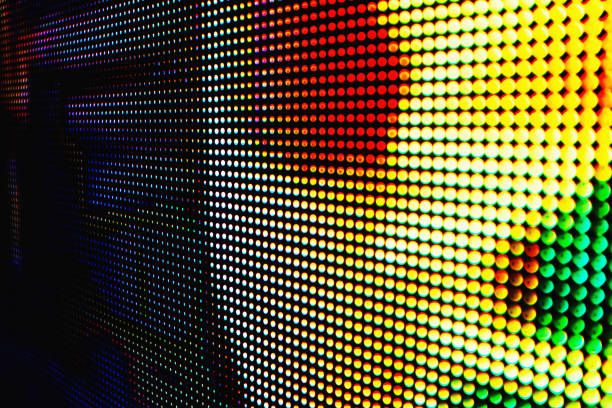
Get a Quote
What Dot Pitch is Best for Your LED Wall Display?
When it comes to LED wall displays, clarity is crucial. Whether you're using it for a high-impact advertisement or an immersive visual experience, the sharpness and detail of your display can make all the difference. One of the most important factors in achieving optimal clarity is the dot pitch of your LED wall display.
Dot pitch, also known as pixel pitch, is a key determinant of display quality. It refers to the distance between the centers of two adjacent pixels. This seemingly small measurement can significantly impact the sharpness, detail, and overall visual quality of your LED display. In this blog, we'll explore what dot pitch is, how it affects your LED wall display, the types of dot pitch available, and how to choose the best one for your needs.
Understanding Key Terms
What is a Pixel?
A pixel is the smallest unit of a digital image, representing a single point of color. Pixels come together to form the complete image on your screen. In the context of an LED wall display, each pixel is composed of tiny dots that emit light. The more pixels you have, the higher the potential resolution of your display, making images sharper and more detailed.
What is Dot Pitch?
Dot pitch measures the distance between the centers of two adjacent pixels on an LED display. This distance is usually measured in millimeters. The smaller the dot pitch, the closer the pixels are to each other, resulting in a sharper and more detailed image. Conversely, a larger dot pitch means pixels are further apart, which can lead to a less detailed image.
The Impact of Dot Pitch on LED Wall Display Quality
Image Sharpness and Detail
The dot pitch of your LED wall display directly influences its image sharpness and detail. A smaller dot pitch means more pixels are packed into the display, enhancing the image quality. This is particularly important for displays that will be viewed up close, as viewers will notice the finer details and sharper images.
Cost Implications
Dot pitch also affects the cost of your LED display. Displays with a smaller dot pitch, which offer higher resolution and better image quality, tend to be more expensive due to the increased number of pixels. On the other hand, a larger dot pitch can reduce costs, making it a more economical option for applications where high resolution is less critical, such as long-distance viewing.
Types of Dot Pitch for LED Wall Displays
Regular Small Dot Pitch LED
For indoor applications such as digital signage and video walls, a regular small dot pitch LED display is ideal. These displays typically have a dot pitch of 5mm or less, ensuring sharp and detailed images that can be appreciated even from relatively short viewing distances.
Large Dot Pitch LED
When it comes to outdoor billboards and other large-scale displays viewed from a distance, a larger dot pitch LED is often sufficient. These displays usually have a dot pitch ranging from 6mm to 10mm. The increased distance between pixels is less noticeable when viewed from afar, making it a cost-effective solution.
Extra Wide Dot Pitch LED
For very large venues like concert stages or sports arenas, an extra wide dot pitch LED display may be the best choice. These displays, with a dot pitch greater than 10mm, are designed to reach a large audience over a vast area. While they may sacrifice some image detail, they are highly visible from great distances and are more economical for large-scale applications.
By understanding the nuances of dot pitch and its impact on LED wall display quality, you can make an informed decision that balances cost and performance. Whether you need a high-resolution display for close-up viewing or a large-scale solution for a distant audience, choosing the right dot pitch is essential for achieving the best results.
Evaluating Your LED Screen’s Dot Pitch
Calculation Methods
Understanding how to measure the dot pitch of your LED wall display is essential for making an informed decision. Dot pitch is determined by the distance between the centers of two adjacent pixels, typically measured in millimeters. To calculate this, you can use the screen's dimensions and its resolution.
For a straightforward calculation, you can use online tools, which simplify the process. By inputting your LED screen’s diagonal size and resolution, these tools can quickly provide the exact dot pitch measurement, helping you choose the best option for your display needs.
Dot Pitch Representation
Dot pitch is commonly represented by a "P" followed by a number, indicating the distance in millimeters. For instance, a P5 LED screen has a dot pitch of 5mm, while a P10 display has a 10mm dot pitch. This representation helps you easily identify and compare the pixel density and potential image quality of different LED displays.
Choosing the Best Dot Pitch for Your LED Wall Display
Application Needs
The ideal dot pitch for your LED wall display depends on the specific application. For tasks requiring high resolution, such as graphic design or detailed presentations, a smaller dot pitch is crucial. This ensures sharper images and finer details. For more casual applications like movie watching or general advertising, a larger dot pitch can be sufficient and more cost-effective, especially if the viewing distance is greater.
Screen Size Considerations
Screen size and dot pitch are closely related. Larger screens, designed to be viewed from a distance, can afford to have a larger dot pitch without compromising image quality. Conversely, smaller screens viewed up close benefit from a smaller dot pitch to maintain clarity and detail. Determining the optimal screen size for your needs helps in choosing the appropriate dot pitch.
Budget Considerations
Balancing Quality and Cost
Choosing the best dot pitch for your LED wall display also involves balancing quality and cost. Higher resolution displays with smaller dot pitches typically come at a higher price. Therefore, it’s important to select a dot pitch that meets your quality requirements without exceeding your budget.
Expert Advice
Consulting with LED display experts can provide valuable insights into finding budget-friendly solutions that don’t compromise on quality. They can help you navigate the various options and recommend the best dot pitch for your specific needs and financial constraints.
By carefully evaluating your application needs, screen size and budget, you can choose the best dot pitch for your LED wall display, ensuring optimal performance and value.
Conclusion
Choosing the right dot pitch for your LED wall display is crucial for ensuring optimal image clarity and detail. Whether your application requires high-resolution displays for close-up viewing or larger screens for distant audiences, selecting the appropriate dot pitch is essential for achieving the best visual performance.
For top-notch LED displays and expert guidance, consider partnering with EACHINLED. With strong R&D capabilities, EACHINLED offers a wide range of LED products and tailored solutions to meet diverse needs. Committed to enhancing visual effects and fulfilling social responsibilities, EACHINLED is dedicated to helping customers achieve the best possible results with their LED displays. Visit EACHINLED today to explore their innovative offerings and find the perfect LED solution for your project.


